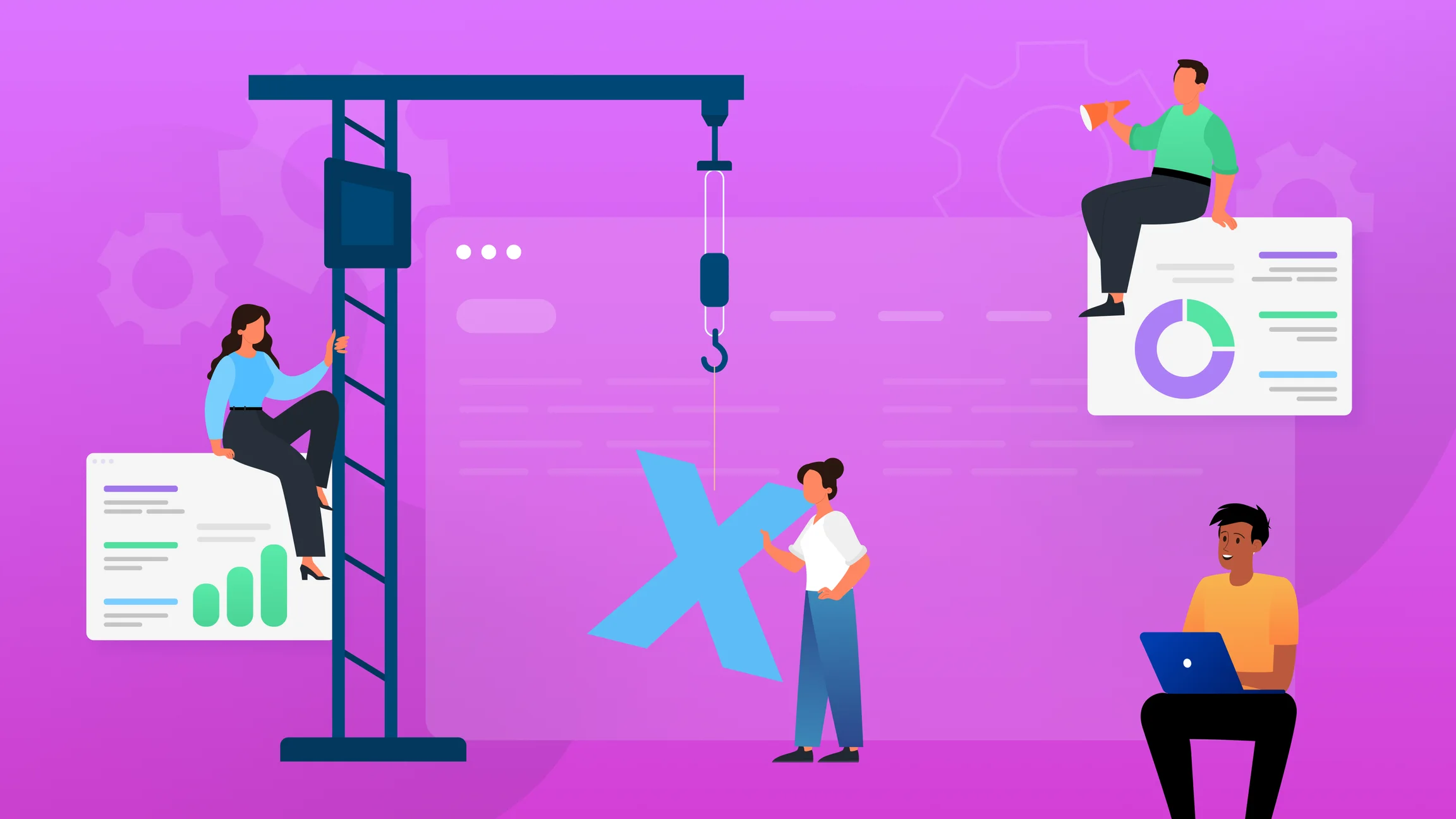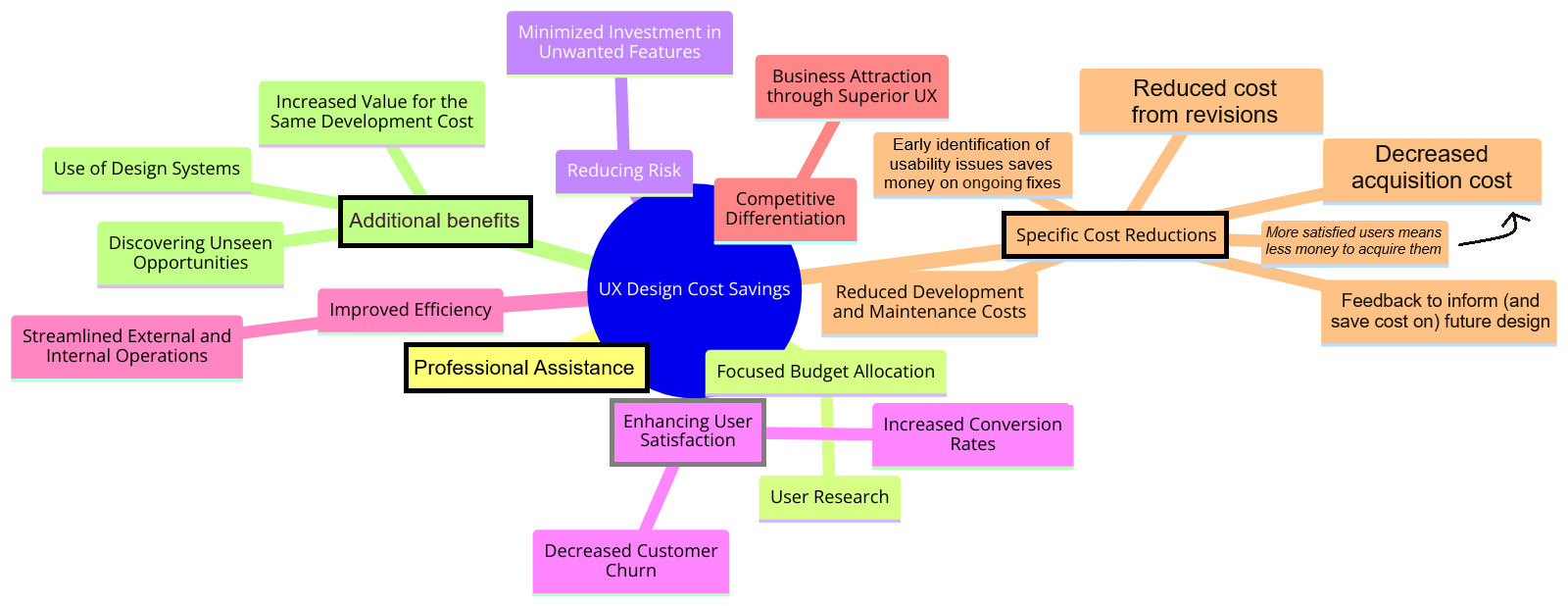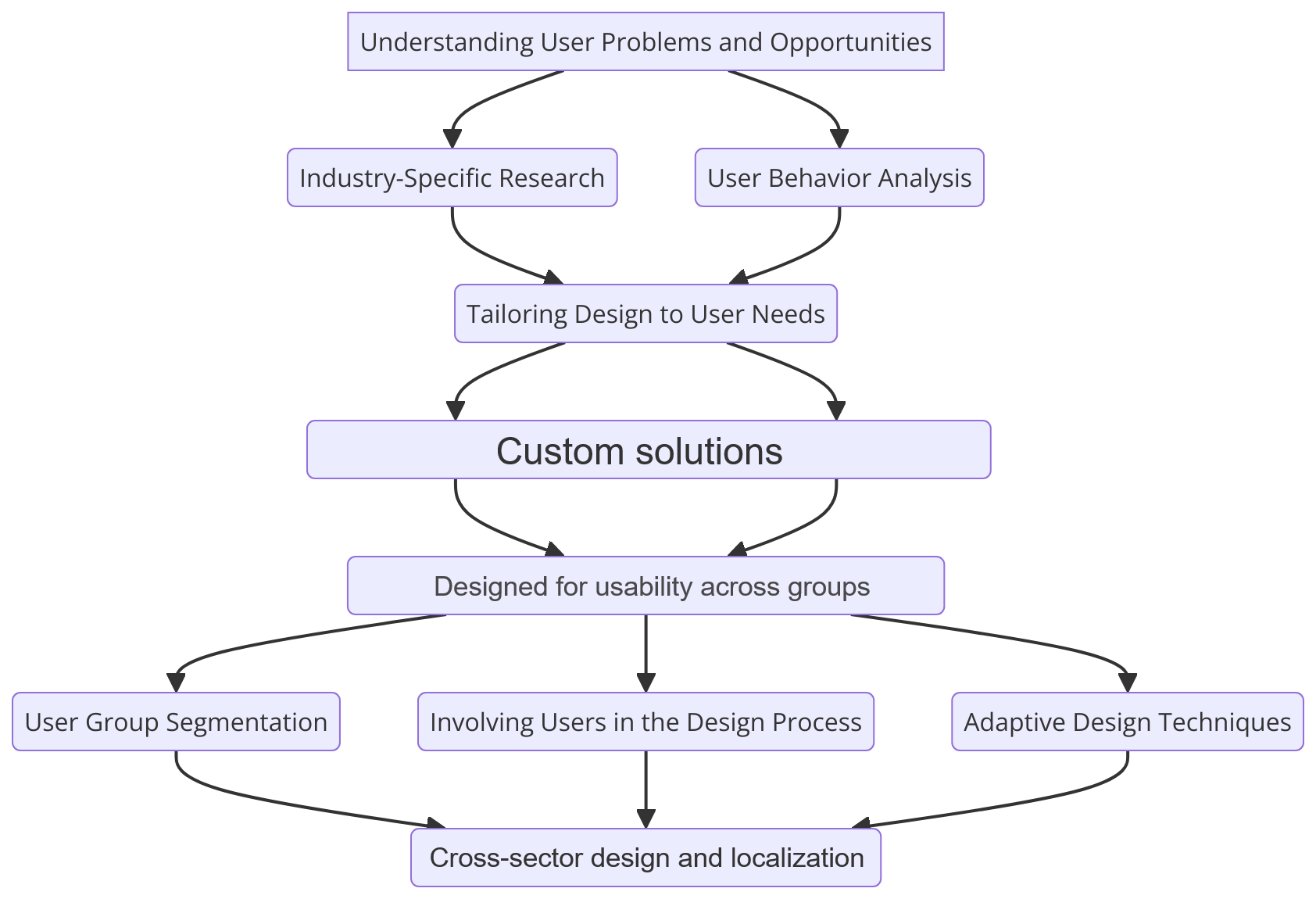If you’re reading this post, you might be wondering, “Why is UX design important for my website?”
Short answer: Because it can SAVE you money, and it balances stakeholder demands, business objectives, and user needs, among other key benefits.
For a more in-depth answer based on our experience with UX design, keep reading. We’re sharing this information because it could help make your life easier as a website owner.
» MORE: For modern web design tips instead of UX, see our article: 11 Best Practices for Modern Web Design
Why is UX design important – Key takeaways
- UX design saves money.
- UX design adapts to specific user groups and industries.
- UX design balances stakeholder demands, business objectives, and user needs.
- UX design does what web design simply can’t.
- UX design makes customers happy!
5 Reasons why UX design is important for a website today
There are many reasons why UX design is important for a website, but we’ve boiled down the most important one based on our experience working with hundreds of clients.
1. UX design saves money
Over the long run, one of the BEST ways to save time and money on your website is to invest in UX design.
When you work with a professional UX designer, they create evidence-based designs that resonate with your users, helping you avoid poor design choices and costly revisions.
This is a fundamentally different approach than just slapping a design together and hoping it works.
Mind map of the ways UX design saves money
Click the image to expand*
2. UX design adapts to specific user groups and industries
Here’s an important thing to remember: Web design may not consider the user, but UX design does. Moreover, UX design helps your website adapt to your specific industry.
For instance:
Let’s say you have a healthcare website for seniors. If you hired a UX designer to improve your design, they would most likely use larger fonts and simplify the navigation as basic first steps. This would make it easier for your audience to use your website.
Here are some things UX designers take into account when designing a website:
- UX designers adapt website navigation and information architecture to suit the browsing habits of different age groups and demographics.
- UX designers create websites that address the challenges and requirements of various sectors by understanding industry-specific pain points.
- UX design takes into account the different devices and technologies used by specific user groups.
UX design adaptation flowchart
3. UX design balances stakeholder demands, business objectives, and user needs
High-quality UX design is tricky, as it requires the designer to balance stakeholder demands, business objectives, and user needs.
It takes experience and good judgment to get these elements right, especially since stakeholders and users often speak different languages. But when done right, UX design makes a website functional, frictionless, and well-balanced.
What UX designers must do when working on a website:
| Listen to Stakeholders | Talk with stakeholders to figure out what they want to see and make those elements fit into the design. |
| Support the Company’s Big Picture | Understand what the company stands for and where it’s headed. |
| Keep within Budget | Work with the website owner to find viable, cost-effective solutions. |
| Know the Website’s Users | Understand who’s visiting the website, what they love and hate, and how to satisfy them. |
| Planning for Growth | Account for the website’s future as a core principle. |
4. UX design does what web design simply can’t
Beyond what we’ve already discussed, there’s a very good reason why UX design does what web design can’t….Web designers are constrained.
This is because every project has a budget and a deadline, and web designers are trying to complete a list of design objectives before moving on to other projects. There are so many limitations that come with this approach, which is why many web designers aren’t really focused on user experience. It’s just not practical.
What makes UX designers so useful is they are trained specifically to think about the needs and preferences of the target audience. They also have their own budget and timeline to ensure the website works well for users.
Benefits of UX design not always found in web design:
- Extensive user research and usability testing.
- User journey mapping.
- Emotional design solutions.
- Platform independence.
- Designing for assistive technologies.
- Usability testing with diverse users.
» MORE: Is UX design directly related to web design?
5. UX design makes customers happy!
Last but not least, UX design puts your customers first. Look, visually appealing designs are a good thing, but every website has to speak to its audience.
At the end of the day, people want a website that meets their needs, is easy to use, and doesn’t take too much of their time.
Ultimately, websites are tools. They’re trying to achieve something. Web design gets halfway there, but in order for your tool to work, its central components have to make sense.
This is how you put your users first and make them happier with your products and services.
Q 1. What are some common UX design mistakes that can negatively impact a website’s success?
- Not doing homework on the industry and target audience.
- Building features that don’t match what users expect or need.
- Writing content that doesn’t speak to the target audience’s problems or interests.
- Ignoring the cultural, social, or economic quirks that shape how the audience behaves online.
- Creating user journeys that don’t fit how people in the industry typically browse.
- Forgetting about industry-specific security, privacy, or compliance needs.
- Neglecting accessibility for users with disabilities in the target demographic.
- Skipping usability tests with real users from the industry and target audience.
- Not using industry-specific feedback and data to tweak the design.
Fortunately, skilled UX designers know how to avoid these pitfalls!
Q 2. How often should a website’s UX design be reviewed and updated?
We would suggest reviewing your website once a year and seeing how it stacks up to your competitors. A redesign might not be needed, but it’s healthy to keep tabs on where your industry is heading.
Q 3. How does UX design differ from UI design, and why are both important for a website?
UX design is all about how a website works and feels. UI design, meanwhile, focuses on how a website looks.
They’re both important for different reasons. UX design makes a website easy to navigate, understand, and use, while UI design creates a better visual experience.
A website needs great UX and UI to succeed – one without the other just doesn’t quite cut it.
Why is UX design important – Conclusion
In this post, we answered the question, “Why is UX design important for a website?” In summary, there are multiple reasons, but they can be boiled down to a simple principle: UX design offers a different foundation of benefits than web design.
For a complete overview of the contents, see the Key Takeaways section.
To enhance your website with top-notch UX design, visit our Connect page and tell us about your project.









